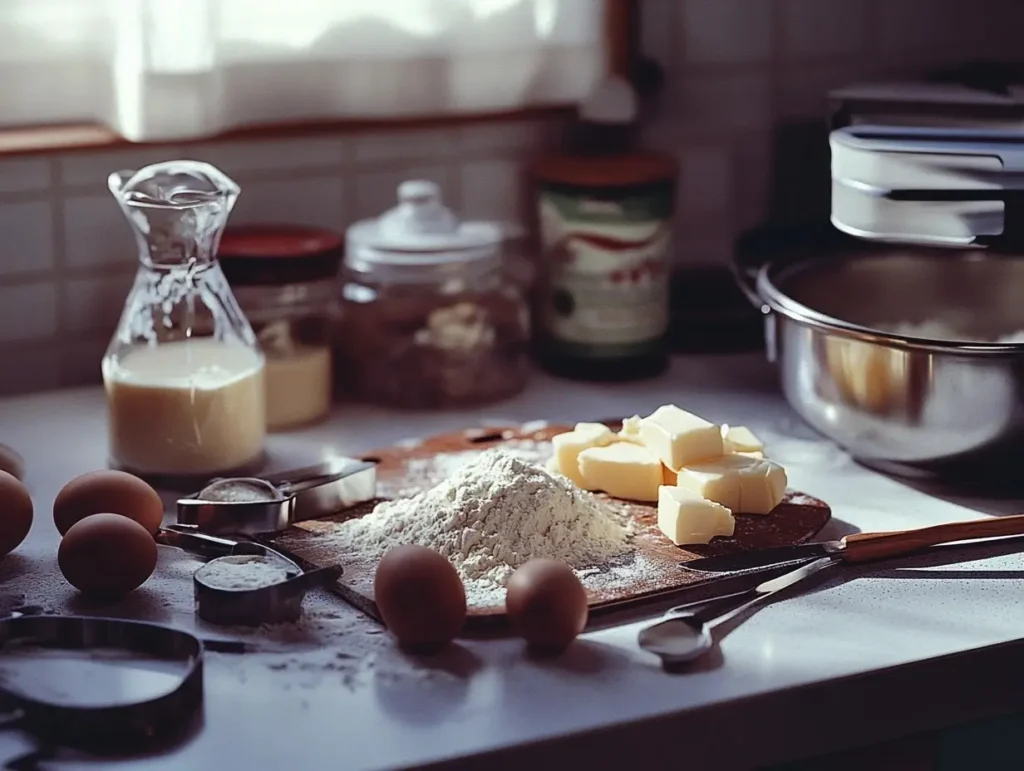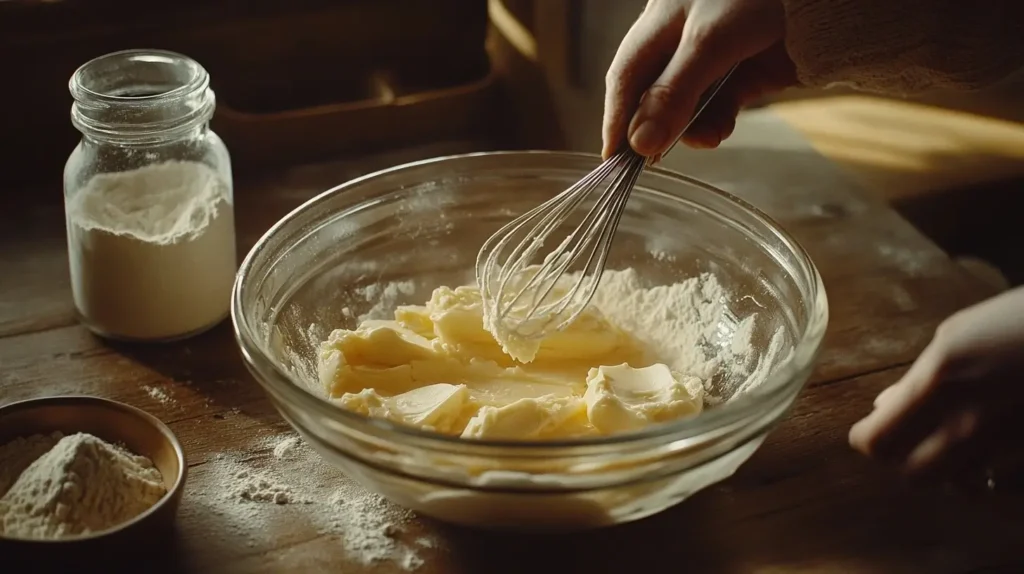Cookies are a timeless treat enjoyed by everyone, but the great debate over how to make chewy vs crunchy cookies divides bakers and cookie lovers alike! The secret to achieving the perfect cookie texture lies in a delicate balance of ingredients, techniques, and baking methods. Whether you crave soft, chewy cookies with gooey centers or prefer thin, crunchy cookies with a satisfying snap, this guide will help you master both styles with ease. Let’s get baking!
Understanding Cookie Textures
The Appeal of Chewy Cookies
Chewy cookies are all about softness and a moist bite, which makes them irresistibly satisfying. Moreover, their dense texture is achieved through specific ingredient combinations and techniques, carefully selected to enhance the final result. As a result, they become the go-to choice for those who love indulgent, melt-in-your-mouth desserts that feel comforting with every bite.
The Appeal of Crunchy Cookies
Crunchy cookies, on the other hand, offer a satisfying snap with every bite. These cookies often have a lighter feel and pair wonderfully with tea or coffee, making them perfect for any occasion.
Importance of Texture in Baking
Texture transforms a cookie into more than just a sweet snack. It defines the entire experience. Understanding the science behind your ingredients, baking temperatures, and times allows you to take control of your results. After all, everyone deserves their version of cookie perfection!
For detailed recipes and expert tips on making apple cookies, check out our guide: Apple Cookies: Irresistible Recipes, Tips, and Ideas for Perfect Treats.
Key Ingredients Influencing Cookie Texture
The texture of your cookies, whether they’re chewy or crunchy, largely depends on the ingredients you choose. Each component plays a unique role in shaping the final result, and small tweaks can make a big difference. Let’s break it down ingredient by ingredient.
Role of Sugars
Brown sugar not only adds moisture but also contains molasses, which offers a range of potential health benefits. For more information on the nutritional impact of sugar and its alternatives, check out Healthline.
Brown Sugar
Brown sugar, with its molasses content, contributes moisture to the dough, making cookies softer and chewier. Its acidic nature also reacts with baking soda to create a puffier texture. If chewy cookies are your goal, use more brown sugar in your recipe.
Granulated Sugar
Granulated sugar, on the other hand, promotes spreading and creates a crispier cookie. It lacks the moisture of brown sugar, so recipes with a higher proportion of granulated sugar tend to produce thinner, crunchier results.
Role of Fats
Fat is essential for flavor and texture. The type of fat you use determines whether your cookies turn out rich and soft or firm and crisp.
Butter
Butter is prized for its flavor and richness. When melted, it creates a denser, chewier cookie because it adds liquid to the dough. Creamed butter, however, incorporates air, leading to a lighter texture.
Shortening
Shortening, with its higher melting point, not only helps cookies hold their shape but also ensures they stay thick during baking. Additionally, since it lacks the water content found in butter, it minimizes spread, resulting in a crunchier texture that many cookie lovers adore.
Oil
Oil creates moist cookies but can also lead to flat, greasy results if used in excess. It’s a good choice for recipes where you want a soft but slightly denser texture.
Role of Eggs
Eggs bring structure, moisture, and richness to your cookies, but different parts of the egg can alter the results.
Whole Eggs
Whole eggs provide balance, combining the richness of yolks and the binding power of whites. They’re a staple for cookies with a moderately chewy texture.
Egg Yolks
Egg yolks are high in fat, contributing tenderness and richness. Adding extra yolks enhances chewiness and softness.
Egg Whites
Egg whites, being mostly protein, offer structure and stability. Using more whites can make cookies firmer and slightly crunchier.
Role of Flours
Flour is the backbone of any cookie dough, affecting texture, chewiness, and structure.
All-Purpose Flour
This versatile flour strikes a balance between chewiness and crunch. Its moderate protein content provides structure without making cookies too dense.
Cake Flour
Cake flour has less protein, resulting in a finer, more tender crumb. It’s a great choice for cookies that melt in your mouth, like soft sugar cookies.
Mastering these ingredients is the first step to customizing your cookies exactly how you like them! In the next section, we’ll explore the methods and techniques that bring chewy cookies to life.
Methods to Create Chewy Cookies
If chewy cookies are what you’re after, you’ll need the perfect combination of ingredients, techniques, and baking strategies to achieve that texture. Furthermore, understanding the role each element plays is essential for success. So, let’s dive into the methods that guarantee a soft, gooey bite every time!
Ingredient Selection
The ingredients you choose set the foundation for chewy cookies. Small adjustments can make a world of difference.
Using Higher Ratios of Brown Sugar
Brown sugar is your secret weapon for chewy cookies. Its molasses content adds moisture and creates a rich, caramel-like flavor. By increasing the ratio of brown sugar to granulated sugar in your recipe, you’ll achieve a softer texture while keeping that irresistible sweetness intact.
Incorporating Melted Butter
Melted butter adds extra liquid to the dough, contributing to a denser, chewier result. Unlike creamed butter, it doesn’t aerate the dough, which helps prevent cookies from puffing up and becoming too light.
Mixing Techniques
How you mix your cookie dough affects its texture just as much as the ingredients do.
Importance of Proper Creaming
When using creamed butter, beat it with the sugar until the mixture is light and fluffy. This step not only incorporates air for structure but also helps sugar dissolve evenly, which can improve moisture retention. However, avoid overmixing after adding flour—too much gluten development can make cookies tough.
Baking Considerations
Baking time and temperature are crucial for achieving that perfectly chewy consistency.
Lower Baking Temperatures
Baking cookies at a slightly lower temperature, around 325°F (163°C), allows them to bake more slowly. This retains moisture, giving you soft, chewy centers.
Shorter Baking Times
Keep an eye on your cookies and pull them out as soon as the edges are set but the centers still look slightly underbaked. Residual heat will finish the job, leaving you with perfectly gooey cookies.
Additional Tips
For an extra edge in chewiness, these bonus tricks will elevate your baking game.
Adding Extra Egg Yolks
Adding an extra yolk to your dough increases fat content, enhancing tenderness and chewiness. Egg yolks also add a richer flavor that makes your cookies even more satisfying.
Chilling the Dough
Chilling your dough before baking allows the fats to solidify, preventing excessive spread. This results in thicker cookies with a chewier texture. Plus, it gives the flavors time to meld, creating a more robust taste.
By combining these strategies, you can achieve cookies that are irresistibly chewy and bursting with flavor. But if you’re craving a crunch, stay tuned for the next section!

Methods to Create Crunchy Cookies
If you love cookies that snap and crumble with each bite, crunchiness is the texture you’re aiming for. Achieving this satisfying result requires deliberate choices in ingredients, mixing techniques, and baking practices. Here’s how to make it happen.
Ingredient Selection
The foundation of crunchy cookies lies in the balance of specific ingredients that enhance crispness.
Using Higher Ratios of Granulated Sugar
Granulated sugar is the key to crunchy cookies. Unlike brown sugar, it lacks moisture, promoting a drier, crisper texture. Increasing the ratio of granulated sugar in your recipe will help cookies spread more and become thinner and crunchier during baking.
Incorporating Solid Fats Like Shortening
Shortening is a standout choice for crunchy cookies. Its higher melting point means cookies spread less and retain their structure better. Unlike butter, which contains water, shortening creates a drier, firmer texture perfect for crunch.
Mixing Techniques
How you handle the dough is just as important as what goes into it when crafting crispy cookies.
Minimal Mixing to Avoid Air Incorporation
Overmixing incorporates air into the dough, which can lead to puffier cookies. For crunch, mix the ingredients just until combined. This minimizes air pockets and creates a denser, flatter cookie that crisps up nicely in the oven.
Baking Considerations
The baking process is where the magic happens, and the right combination of time and temperature is essential.
Higher Baking Temperatures
Baking cookies at a higher temperature, around 375°F (190°C), encourages quicker evaporation of moisture. This results in a dry, crispy texture and beautifully browned edges that add to the crunch.
Longer Baking Times
Letting cookies bake a little longer than usual allows the moisture to fully evaporate. Keep a close eye to avoid burning, but don’t be afraid to let them develop a deep golden hue for maximum crunchiness.
Additional Tips
For cookies that practically crackle with every bite, these bonus tips are game-changers.
Thin Dough Spreading Techniques
Spreading the dough thinner on the baking sheet ensures that the cookies cook evenly and dry out faster. Flatten each ball of dough with a fork or the bottom of a glass before baking to encourage a thin, crunchy profile.
Using Baking Soda for Spread
Baking soda reacts with acidic ingredients to create a spreading effect, which helps cookies bake thinner and crispier. A touch of baking soda in the recipe can make all the difference in the texture.
By combining these methods, you’ll be able to bake cookies that deliver that perfect crunch every time. Next, we’ll explore recipes tailored to both chewy and crunchy preferences, so you can try these techniques at home!

Sample Recipes for Chewy and Crunchy Cookies
Now that you know the techniques for creating chewy and crunchy cookies, it’s time to put them into practice! Below are two tried-and-true recipes: one for those who love soft, gooey cookies and another for fans of crisp, crunchy bites.
Classic Chewy Chocolate Chip Cookies
This recipe combines the perfect balance of brown sugar and melted butter for irresistibly chewy cookies.
| Ingredient | Quantity | Purpose |
|---|---|---|
| Brown sugar | 1 cup | Adds moisture and creates a soft texture |
| Granulated sugar | ½ cup | Sweetness and slight spread |
| Unsalted butter (melted) | ¾ cup | Enhances chewiness and rich flavor |
| Vanilla extract | 2 tsp | Adds depth of flavor |
| All-purpose flour | 2 ¼ cups | Provides structure |
| Baking soda | 1 tsp | Helps cookies spread slightly |
| Salt | ½ tsp | Balances sweetness |
| Egg + extra yolk | 1 whole + 1 yolk | Adds richness and chewiness |
| Semi-sweet chocolate chips | 1 ½ cups | Brings delicious bursts of chocolate |
Instructions:
- Preheat the oven to 325°F (163°C).
- Mix sugars and melted butter until combined. Add vanilla, egg, and yolk.
- Gradually fold in dry ingredients, then chocolate chips.
- Chill dough for 30 minutes, then bake for 12–14 minutes or until edges are set.
Traditional Crunchy Oatmeal Cookies
This recipe highlights granulated sugar and shortening for perfectly crunchy oatmeal cookies.
| Ingredient | Quantity | Purpose |
|---|---|---|
| Granulated sugar | 1 cup | Adds sweetness and crisp texture |
| Shortening | ¾ cup | Helps retain shape and crispness |
| Vanilla extract | 1 tsp | Enhances flavor |
| All-purpose flour | 1 ¾ cups | Provides structure |
| Baking powder | 1 tsp | Adds lightness without too much spread |
| Salt | ½ tsp | Balances flavors |
| Old-fashioned oats | 2 cups | Adds texture and crunch |
| Optional: Raisins or nuts | ½ cup each | Provides extra flavor and bite |
Instructions:
- Preheat the oven to 375°F (190°C).
- Cream sugar and shortening until smooth. Add vanilla.
- Combine dry ingredients and gradually add to wet mixture.
- Fold in oats and optional add-ins, then bake for 12–15 minutes.
With these recipes, you can create cookies that are perfectly chewy or delightfully crunchy—tailored to your personal preference!

Troubleshooting Cookie Texture Issues
Even with the best recipes and techniques, cookie baking doesn’t always go as planned. Sometimes, your cookies might turn out too hard, too flat, or simply not how you imagined. Don’t worry—most issues can be traced back to common mistakes and easily fixed. Here’s a guide to troubleshooting cookie texture problems.
Overmixing Dough
Overmixing is a common culprit when cookies come out dense or tough. When you mix dough excessively, you develop too much gluten in the flour, which is great for bread but disastrous for soft cookies. To avoid this, mix the dry ingredients into the wet just until combined—lumps are okay! Remember, less is more when it comes to mixing cookie dough.
Incorrect Oven Temperatures
Your oven’s temperature plays a huge role in cookie texture. If the oven is too hot, cookies can spread too quickly, becoming thin and crispy when you wanted them soft. On the flip side, if it’s too cool, cookies might not bake evenly or puff up as desired. Use an oven thermometer to verify the actual temperature, as many ovens run hotter or cooler than the dial indicates.
Inaccurate Ingredient Measurements
Precise measurements are essential for consistent cookies. Adding too much flour can lead to dry, crumbly cookies, while too much liquid (like melted butter) might make them spread too much. Use a kitchen scale for accuracy when measuring ingredients. For example, 1 cup of flour should weigh about 120 grams.
By identifying and addressing these issues, you’ll save yourself from cookie catastrophes and ensure every batch turns out just how you want it. Whether you’re learning how to make chewy vs crunchy cookies, or troubleshooting specific problems, understanding the science behind baking can make a huge difference. Baking is as much a science as it is an art, and a little attention to detail can go a long way!
Frequently Asked Questions
What causes cookies to become too crunchy?
Cookies can become overly crunchy if they’re baked too long or at too high a temperature. Using too much granulated sugar or not enough moisture-rich ingredients like brown sugar or butter can also lead to a crunchier texture. To control this, balance your ingredient ratios and keep an eye on your oven time.
How to make apple cookies?
Apple cookies combine the warmth of spices like cinnamon and nutmeg with the sweetness of apples. Start with a standard cookie dough base, add grated or finely chopped apples, and mix in oats or nuts for texture. Bake at 350°F (175°C) for 12–15 minutes or until lightly golden. The result? Soft, flavorful cookies perfect for fall.
Looking for a step-by-step guide to ensure your apple cookies turn out perfectly? Don’t miss this detailed guide: How to Make Apple Cookies: A Step-by-Step Guide for Perfect Treats
What is the golden rule in baking cookies?
The golden rule is to measure ingredients accurately. Baking is a precise science, and even slight variations in the amount of flour, sugar, or liquid can alter the texture and flavor of your cookies. Use a scale for the best results, and always preheat your oven to the correct temperature.
To learn more about the key principles and techniques behind the golden rule, visit our detailed guide: The Golden Rule in Baking Cookies: Achieve Perfect Results Every Time.
What is the secret to making the best cookies?
The secret lies in understanding your ingredients and how they interact. For chewy cookies, use melted butter, brown sugar, and an extra yolk. For crunchy cookies, go for granulated sugar, solid fats like shortening, and a longer bake time. Also, don’t skip chilling the dough—it’s a game-changer for texture and flavor.
Why do you put apple cider vinegar in cookies?
Apple cider vinegar acts as a leavening agent when combined with baking soda. It adds a slight tang and helps cookies rise without spreading too much. This trick is especially useful in vegan recipes that don’t include eggs. Don’t worry—the vinegar flavor won’t come through in the final cookie.
To dive deeper into the benefits and tips for using apple cider vinegar in cookies, check out this helpful guide: Why Do You Put Apple Cider Vinegar in Cookies? (Benefits + Tips).
Conclusion
Baking the perfect cookie—whether chewy or crunchy—is a delightful blend of art and science. By understanding how to make chewy vs crunchy cookies and the roles of ingredients like sugars, fats, eggs, and flours, you can consistently create cookies that match your ideal texture. Learning the key differences in techniques is the first step toward mastering both styles.
For chewy cookies, focus on moisture-rich ingredients like brown sugar and melted butter, while shorter baking times and chilling the dough seal the deal. If you’re wondering how to make chewy vs crunchy cookies work in one kitchen, it’s all about adjusting the sugar ratios and fats to suit your preference. If you prefer crunchy cookies, prioritize granulated sugar, solid fats like shortening, and a longer bake time at higher temperatures. Knowing how to make chewy vs crunchy cookies gives you the flexibility to cater to everyone’s tastes.
Don’t forget, baking is also about experimenting and finding what works best for your taste buds. Each batch is an opportunity to learn, whether it’s discovering a new trick or tweaking a recipe. Mastering how to make chewy vs crunchy cookies is a rewarding journey that leads to delicious results every time.
Whether you’re whipping up gooey chocolate chip cookies or crispy oatmeal treats, understanding how to make chewy vs crunchy cookies ensures that your baking adventures will always end on a sweet note. Now it’s time to grab your apron, preheat the oven, and start baking your perfect batch!

